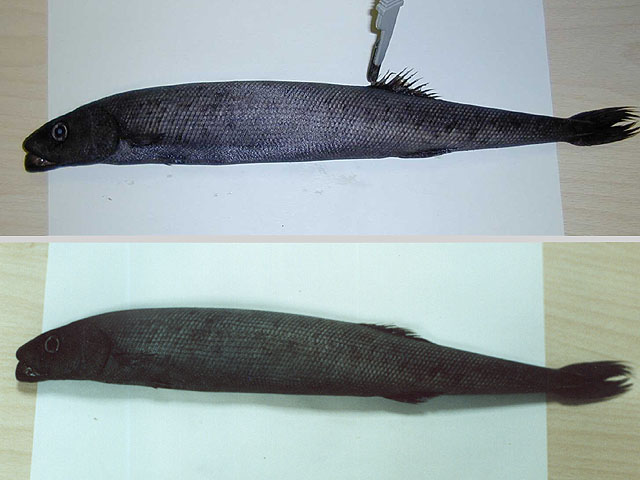| Tetragonuridae (Squaretails) |
| 70 cm TL (male/unsexed) |
|
bathypelagic; marine; depth range 1 - 800 m, oceanodromous |
| Eastern Pacific: Aleutian Islands, Alaska to Baja California, Mexico; Chile (Ref. 9068). Western Pacific: Japan (Ref. 559), New Zealand and Australia (Ref. 6885). Western Indian Ocean: Natal, South Africa (Ref. 4415). Atlantic Ocean, including the Mediterranean (Ref. 4415). |
|
Dorsal spines (total): 15-21; Dorsal soft rays (total): 12-15; Anal spines: 1-1; Anal soft rays: 11-13; Vertebrae: 52. Pectorals and pelvic fins small (Ref. 6885). Dark brown, paler at base of tail and on head, otherwise almost uniform throughout (Ref. 6885). |
| Oceanic, usually near surface; possibly near bottom. Perhaps occurs in schools. Young usually among jellyfishes or inside large salps. Feeds on jellyfishes and salps (Ref. 2850), also other soft-bodied coelenterates, ctenophores, as well as plankton. There are conflicting reports that the flesh of this species is poisonous (Ref. 11149). |
|
Least Concern (LC); Date assessed: 19 May 2013 Ref. (130435)
|
| reports of ciguatera poisoning |
Source and more info: www.fishbase.org. For personal, classroom, and other internal use only. Not for publication.
